|
Displaying items by tag: archives
The Los Angeles County Museum of Art announced plans this month to build a new wing spanning Wilshire Boulevard.
It also wants to build up — way up.
The museum is working on an ambitious proposal for a skyscraper near the corner of Wilshire and Fairfax Avenue, on land partly owned by LACMA across from its main campus.
Museum officials envision the tower, rising above a planned Metropolitan Transportation Authority subway station at Wilshire and Orange Grove Avenue, as having a hotel and condominiums. It would also contain LACMA galleries, including a new architecture and design wing and, potentially, architect Frank Gehry's archives.
A painting by Artemisia Gentileschi achieved €865,000 ($1,179,832) at Sotheby’s in Paris, nearly three times its presale estimate of €200,000–300,000 ($272,000–$408,000), reports Art Daily. The price sets a new world record price for the 17th-century Baroque artist.
The work existence was until recently only documented in an old black and white photograph from the archives of an Italian dealer (see artnet News report). It’s believed the consignor’s family acquired the painting from that dealer at the beginning of the 20th century.
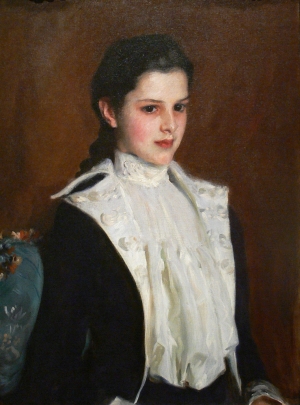
Three Texas museums -- the Amon Carter Museum of American Art in Fort Worth, the Dallas Museum of Art, and the Nasher Sculpture Center in Dallas -- are adding more than a combined 1,700 high-resolution works of art to the Google Art Project. The Art Project, which is part of the Google Cultural Institute, allows users to virtually explore works of art from international museums, institutions, and archives. Currently, there more than 57,000 high-resolution images of works ranging from oil on canvas paintings to sculpture and furniture.
The Amon Carter Museum has submitted 1,200 images to the Google Art Project, showcasing works by American artists such as Mary Cassatt, John Singer Sargent, and James McNeill Whistler. The museum also contributed 200 photographs from its collection. The Dallas Museum of Art submitted around 500 works from its collection including “Sheaves of Wheat” by Vincent van Gogh. The Nasher Sculpture Center, which houses a collection of modern and contemporary sculpture, submitted images of works by Auguste Rodin and Mark di Suvero.
The exceptional quality of the images coupled with the Google Art Project’s custom-built zoom view, allows users to explore the finest details of each object. Visitors can browse works by artist, title, medium, museum, country, time period, or collection. Virtual guided tours by experts are available on the site so that users can learn more about a particular work or topic.
To view works from the Amon Carter Museum of American Art, the Dallas Museum of Art, and the Nasher Sculpture Center, visit the Google Art Project.

Washington, D.C.’s Smithsonian Institution, which is comprised of 19 museums and 9 research centers devoted to the “increase and diffusion of knowledge,” has seen an rise in troubles relating to their storage system. The Smithsonian currently has 130 million objects ranging from paintings and furniture to skeletons in their storage and maintenance facilities, many of which reside in damaged containers or poorly organized archives. During a recent audit, the National Museum of American History was allegedly unable to locate 10% of their collection.
The Committee on House Administration held a hearing on Wednesday, July 17th to discuss the challenges facing the care of the Smithsonian’s collections of art, archival footage and delicate objects. Smithsonian Inspector, General Scott Dahl, claimed that the institution is still employing poor storage space that was built in the 1950s and never intended for long-term use. A report from the Smithsonian’s inspector general in 2006 showed that not only were the storage facilities inadequate, but that security and inventory controls were lacking, leaving some of the country’s most precious treasures susceptible to theft or misplacement.
The Smithsonian has been working to fix their storage and maintenance issues for the past seven years and has invested $462 million in collections management and $390 million in facilities improvements. However, ongoing budget cuts have made fixing these issues once and for all, increasingly difficult. In addition, a large portion of the Smithsonian’s budget is currently being used to digitize the museum’s collection, which could take years.
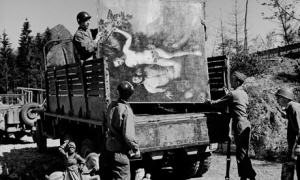
The Swiss government has launched a website that will help claimants, museums, and researchers track Nazi-looted artworks that have made their way to Switzerland. Switzerland became a hub for Nazi plundered artworks following World War II. The country was a popular place for Jewish art dealers who were fleeing the Nazis and many Swiss museums, collectors and dealers acquired works stolen from the Jews by the Nazis.
The new site will provide visitors with guidance on provenance research, links to relevant databases and archives, and details on Swiss museums’ own analyses of their collections. Switzerland is one of 44 countries that sanctioned the Washington Principles on returning Nazi-looted art in public collections in 1998. Under the policy, governments agreed to find “just and fair” solutions for the victims of Nazi plundering and their heirs as well as to allocate resources to identifying looted art. In spite of Switzerland’s cooperation, it is still believed that there is a fair amount of Nazi-looted artworks in Swiss collections. Provenance research has only been conducted among a select few of the government museums, private collections, and foundations that have artworks from this tragic period.
Switzerland’s newly launched website for tracking Nazi-looted artworks is www.bak.admin.ch/rk.

While James Douthat, the recently retired president of Pennsylvania’s Lycoming College, was cleaning out a closet in his office, he uncovered a rare document signed by former president of the United States, Abraham Lincoln. The historical certificate dates back to 1863 and names the college’s founder, Benjamin Crever, a Civil War chaplain. Preserved in a black frame, the document is in good condition and Lincoln’s signature is clearly visible. Secretary of War Edwin M. Stanton also signed the document.
Douthat, who has worked at Lycoming College for 24 years, had vaguely remember hearing about the document but was shocked to find it in his own closet. While no one is sure how the certificate got misplaced, they are pleased to have it back. An early appraisal estimated the document to be worth in excess of $6,000. The piece is significant for the small college because it adds some distinction to its name. Located in central Pennsylvania, Lycoming only has about 1,400 students.
Crever was one of 500 Union hospital chaplains. He served at a military hospital in Frederick, MD between July 1862 and August 1865, a period that included the battle of Gettysburg. The document is being kept in the archives of the college’s library for the time being.
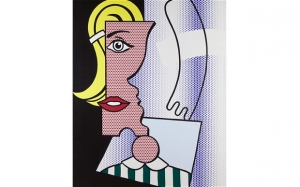
A painting by renowned Pop artist Roy Lichtenstein (1923-1997) will be the highlight of Masterpiece London, which takes place at the Royal Hospital Chelsea from June 27 through July 3, 2013. Now in its fourth year, the show presents the finest art, antiques, and design from across the globe.
While works ranging from furniture, jewelry, and books to classic cars, watches, and whiskey will be offered, there is one particular artwork generating tons of pre-show buzz. Geoffrey Diner, a Washington, D.C.-based art dealer, will present Roy Lichtenstein’s Puzzle Portrait (1978), which has not been seen in public in 30 years and has never appeared at auction. Similar paintings are part of the Guggenheim Museum’s and the Metropolitan Museum of Art’s collections in New York. Puzzle Portrait is expected to garner around $10 million.
Diner has revealed little about the painting’s provenance other than the fact that it was sold in 1984 to “a prominent American collection.” Diner purchased the painting privately last year and the change of ownership still has not been registered in the Lichtenstein Foundation archives. The identity of the previous owners will be revealed to the buyer upon acquisition of the painting. The future buyer will also be given the personal correspondence between them and the artist from the original transaction.
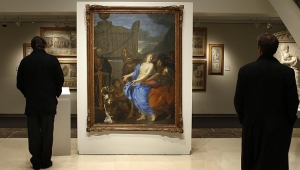
Back in January, a 17th century masterpiece was discovered at Paris’ legendary Ritz hotel, which is currently undergoing a major $267.5 million renovation. Olivier Lefeuvre, a specialist in the period at Christie’s France, first spotted the work, which is by the French painter and court artist of Louis XIV, Charles Le Brun (1619-1690). How the painting ended up in the Ritz remains a mystery, as the hotel archives lack any reference to the work.
The 400-year-old painting was sold by auction house Christie’s on Thursday, April 18, 2013 to New York’s Metropolitan Museum of Art for $1.88 million. The Met does not have any other works by Le Brun so the acquisition will be a welcomed addition to the museum’s collection of 17th century paintings. The masterpiece is expected to go on display at the Met at the end of May.
The painting, which depicts the killing of Trojan princess Polyxena after she was linked to the death of Achilles, had hung in one of the suites at the Ritz that designer Coco Chanel lived in for over 30 years. Proceeds from the sale will go to the foundation established by Ritz owner Mohamed Al Fayed in memory of his son Dodi, the late boyfriend of Princess Diana.
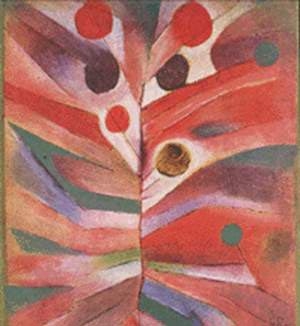
The heirs of Alfred Flechtheim, a prominent Jewish art dealer who fled Nazi Germany during World War II, are urging the German state of North-Rhine Westphalia to return artworks belonging to their relative. The paintings in question, which are by Paul Klee (1879-1940) and Juan Gris (1887-1927), are currently part of the Kunstsammlung Nordhein-Westfalen’s collection in Dusseldorf.
Before the perils of World War II took hold, Flechtheim was an established art dealer in Europe, representing a variety of well-known artists including Klee, Max Beckmann (1884-1950), and a number of French Cubists. Flechtheim ran galleries in Dusseldorf and Berlin, organized many exhibitions, and founded an art magazine. However, Flechtheim’s high standing in the art world made him an easy target for the Nazis. He fled Germany in 1933 shortly after a stream of hateful articles ran in the Nazi press. Flechtheim escaped to Zurich, then Paris before settling in London. After his getaway, Flechtheim’s Dusseldorf gallery was seized and turned over to his former employee Alex Voemel, a Nazi. Flechtheim’s gallery in Berlin was liquidated and his collection, which included works by Pierre-Auguste Renoir (1841-1919), Wassily Kandinsky (1866-1944), Fernand Leger (1881-1955), Georges Braque (1882-1963), and Henri Matisse (1869-1954), was sold.
Mike Hulton, Flechtheim’s great-nephew, claims that Klee’s Feather Plant (1919) and Gris’ Still Life (Violin and Inkwell) (1913) were part of Flechtheim’s private collection and sold under duress for well below their value when he fled Germany. The Kunstsammlung Nordhein-Westfalen does not believe there is enough evidence to support Hulton’s claim. In addition, owners of archives that could help in the case are refusing to let provenance researchers access their information, bringing the dispute to a standstill. Officials from the Kunstsammlung Nordhein-Westfalen assert that if it was proven that Flechtheim was forced to sell the works by Gris and Klee or that he received little to no money for them, that they would part with the paintings, but the current evidence is inconsequential.
Flechtheim’s heirs are currently pursuing restitution for over 100 paintings in museums in the United States, France, Germany, and other European countries.
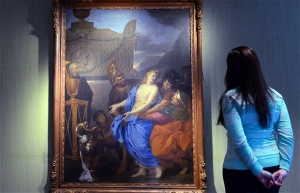
Paris’ legendary Ritz hotel, which is currently undergoing a major $267.5 million renovation, has been unknowingly sheltering a 17th century masterpiece. The work, which is believed to be by the French painter and court artist of Louis XIV, Charles Le Brun (1619-1690), was first spotted by Olivier Lefeuvre, a specialist in the period at Christie’s France. Upon seeing the painting in July, a month before the Ritz closed its doors for two years worth of renovations, Lefeuvre knew that the work had to be a Le Brun. Initials reading “CLBF,” which stands for Charles Le Brun Fecit (Le Brun did this) and a date, “1647,” were found on the work, supporting Lefeuvre’s hunch.
How the painting ended up in the Ritz remains a mystery, as the hotel archives lack any reference to the work. While Christie’s has been unable to track down any record of the painting, officials have no doubt that the work is an authentic Le Brun. The painting, which depicts the killing of Trojan princess Polyxena after she was linked to the death of Achilles, was renamed The Sacrifice of Polyxena by Christie’s.
The Le Brun painting will be auctioned by Christie’s in Paris in April 2013 and could raise as much as $665,000 for the foundation established by owner Mohamed Al Fayed in memory of his son Dodi, the late boyfriend of Princess Diana. Dodi and Diana dined at the Ritz before their fatal car accident in 1997.
The painting will go on display at Christie’s New York location next week.
|
|
|
|
|